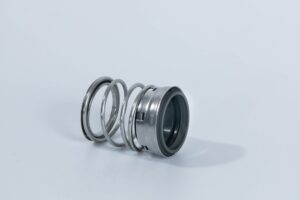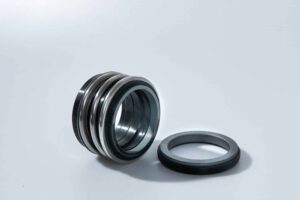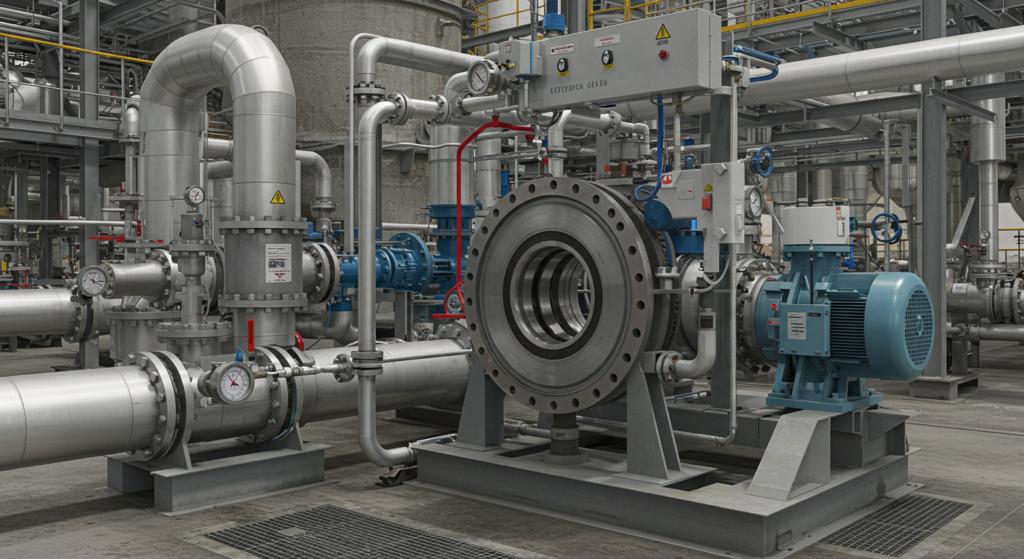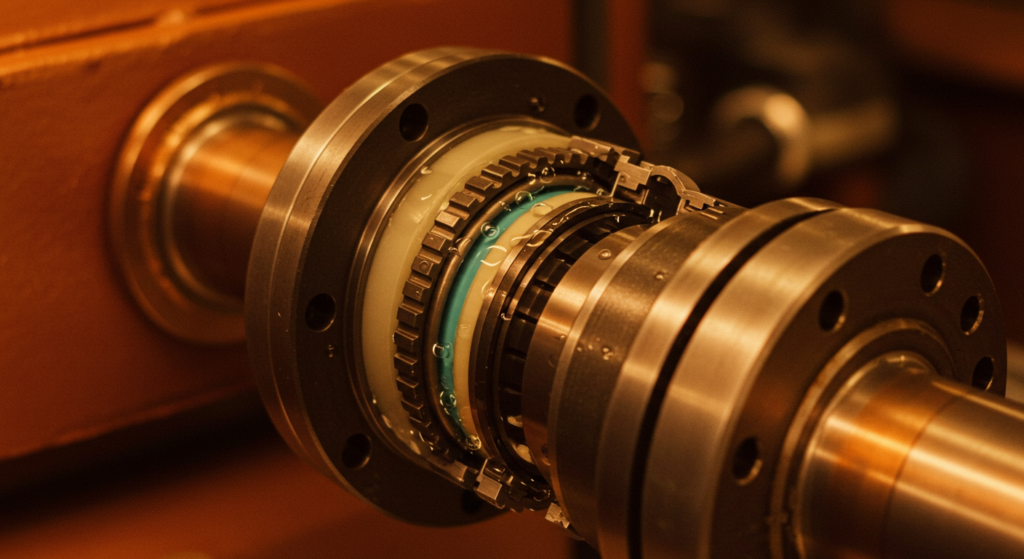Have you ever heard a pump making strange noises or noticed a decrease in its performance? These could be signs of pump cavitation.
Pump cavitation occurs when vapor bubbles form and collapse within a pump, causing damage and reduced efficiency.

What Is Vapor Pressure
Vapor pressure is the pressure exerted by a vapor in thermodynamic equilibrium with its condensed phases at a given temperature. For liquids, it indicates the tendency to evaporate. Higher vapor pressure means a substance is more volatile.
What is Pump Cavitation
Pump cavitation is a phenomenon that occurs when the pressure in a fluid drops below its vapor pressure, causing the formation of vapor bubbles. This typically happens in centrifugal pumps and positive displacement pumps. As these bubbles move to areas of higher pressure, they collapse violently, creating shock waves.
Types of Cavitation in Pumps
Vaporisation Cavitation
Vaporisation cavitation, also known as classical cavitation, occurs when the pressure at the pump inlet drops below the fluid’s vapor pressure. This causes vapor bubbles to form near the impeller eye. As these bubbles move to higher pressure areas, they collapse violently, potentially damaging the impeller and reducing pump efficiency.
Turbulence Cavitation
Turbulence cavitation results from flow disturbances in the pump inlet. Sharp bends, obstructions, or improper piping configurations can create vortices and low-pressure areas where vapor bubbles form. This type of cavitation often occurs near the pump inlet and can cause erosion of the impeller’s leading edges.
Vane Syndrome Cavitation
Vane syndrome cavitation happens when the clearance between the impeller’s outer diameter and the pump casing’s cutwater is too small. This tight gap accelerates fluid flow, creating low-pressure zones where cavitation bubbles form. It typically affects the impeller’s blade tips and the pump casing near the discharge area.
Internal Recirculation Cavitation
Internal recirculation cavitation occurs when a pump operates at low flow rates, far from its best efficiency point. Fluid recirculates within the pump, creating low-pressure areas where cavitation bubbles form. This type can damage both the impeller and the pump casing, particularly in the regions between the impeller back shroud and casing.
Air Aspiration Cavitation
Air aspiration cavitation results from air entering the pump system. This can happen due to leaks in suction piping, improper sealing, or vortexing in the suction vessel. The entrained air forms bubbles that collapse when subjected to higher pressures within the pump, causing damage similar to other types of cavitation.
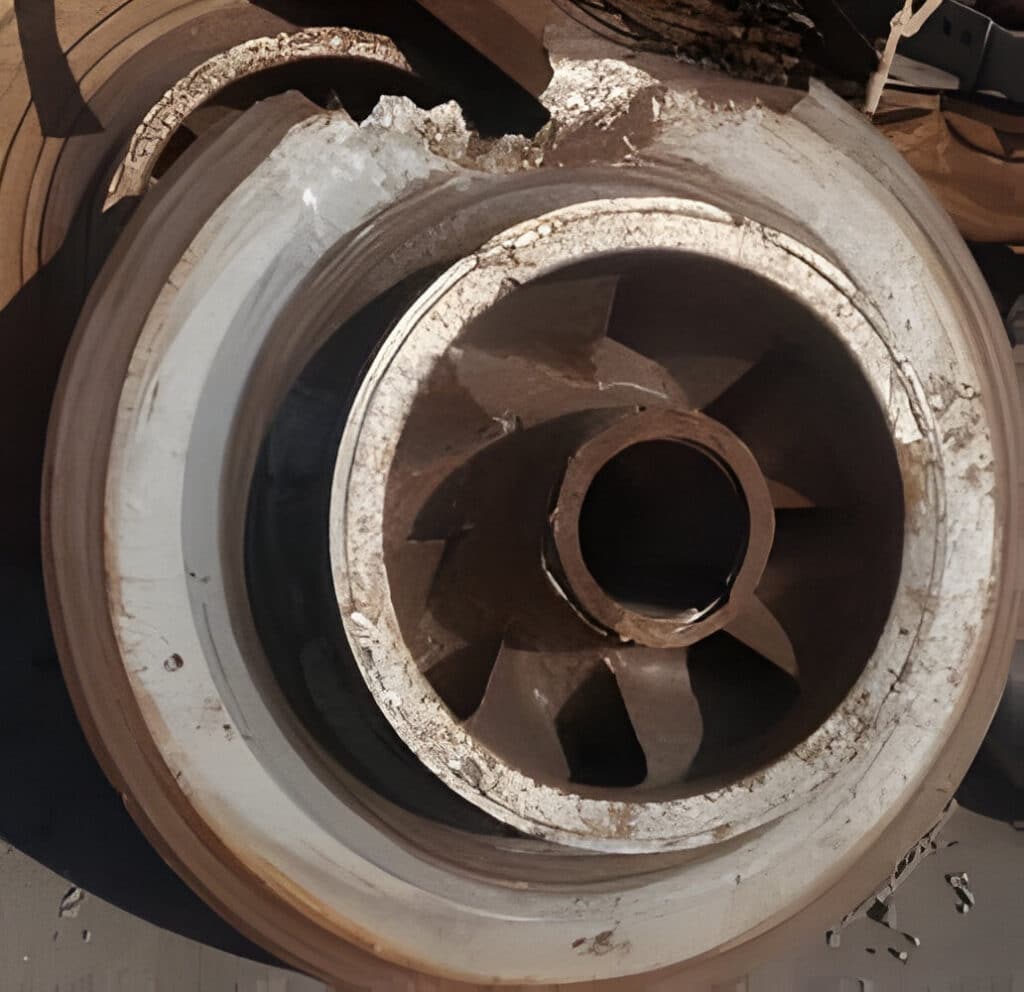
Common Causes of Pump Cavitation
Insufficient Net Positive Suction Head Available (NPSHa)
Insufficient NPSHa is a primary cause of pump cavitation. When the available suction head falls below the required level, vapor bubbles form in the liquid. These bubbles collapse as they enter higher pressure zones, causing damage to the pump impeller and other components.
Suction Line Issues
Blockages, restrictions, or excessive friction losses in the suction line can lead to cavitation. These issues reduce the pressure at the pump inlet, potentially dropping it below the liquid’s vapor pressure.
Volatile Liquids and Vapor Pressure
Pumping volatile liquids near their vapor pressure increases the risk of cavitation. As the liquid approaches its vapor pressure, it becomes more susceptible to bubble formation.
Operating Off Best Efficiency Point (BEP)
Running a centrifugal pump too far from its BEP flow can cause cavitation. This often occurs when the pump operates at flow rates significantly higher or lower than designed.
Entrained Air or Gas
The presence of entrained air or gas in the pumped liquid can lead to cavitation-like effects. These gas bubbles can collapse and cause damage similar to vapor bubble implosion.
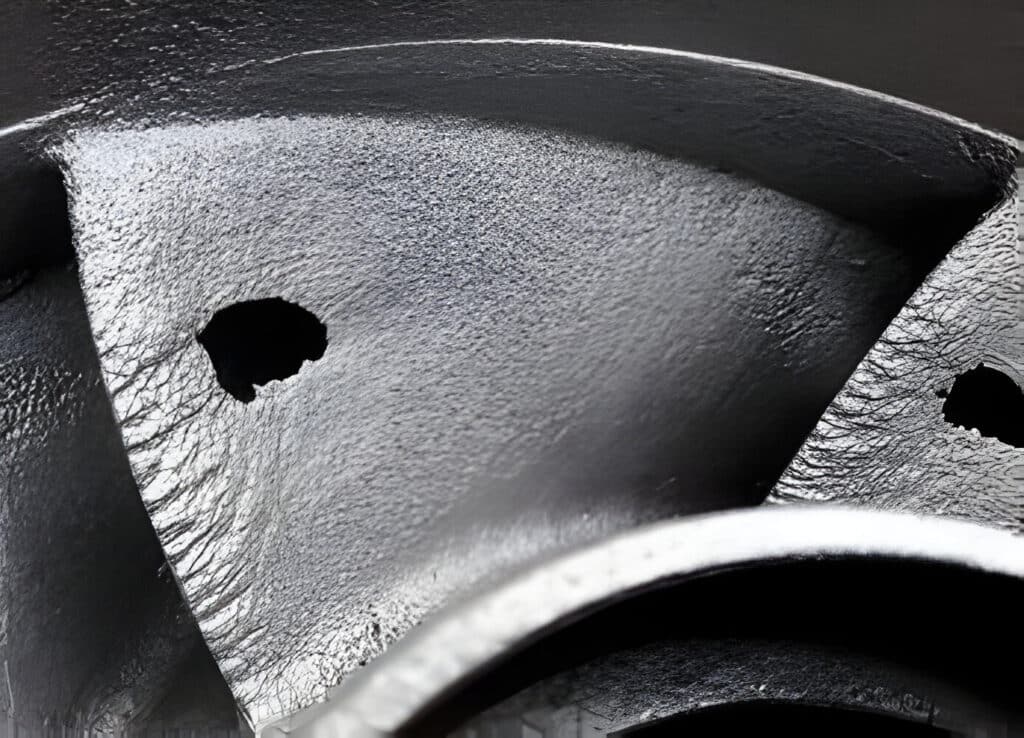
Signs of Pump Cavitation
Physical Damage to Pump Components
Cavitation causes severe erosion of pump components. The impeller often exhibits pitting and material loss, appearing worn beyond its actual service life. Pump housing and seals may also show signs of damage due to the intense shock waves produced by collapsing vapor bubbles.
Abnormal Noise and Vibration
Excessive noise and vibration are telltale signs of cavitation. The sound resembles gravel or marbles circulating through the pump. Vibration levels increase significantly, potentially leading to misalignment and further mechanical issues.
Reduced Discharge Pressure and Flow
A substantial drop in discharge pressure and flow rate indicates cavitation. The presence of vapor bubbles in the fluid reduces the pump’s efficiency, leading to decreased performance. This effect is particularly noticeable in centrifugal pumps.
Frequent Seal and Bearing Failures
Cavitation accelerates wear on seals and bearings. The intense shock waves and vibration cause premature failure of these components.
Unstable Power Consumption
Erratic power consumption is another indicator of cavitation. The motor current and power draw fluctuate as the pump struggles to maintain performance. This instability can lead to increased energy usage and potential motor damage.
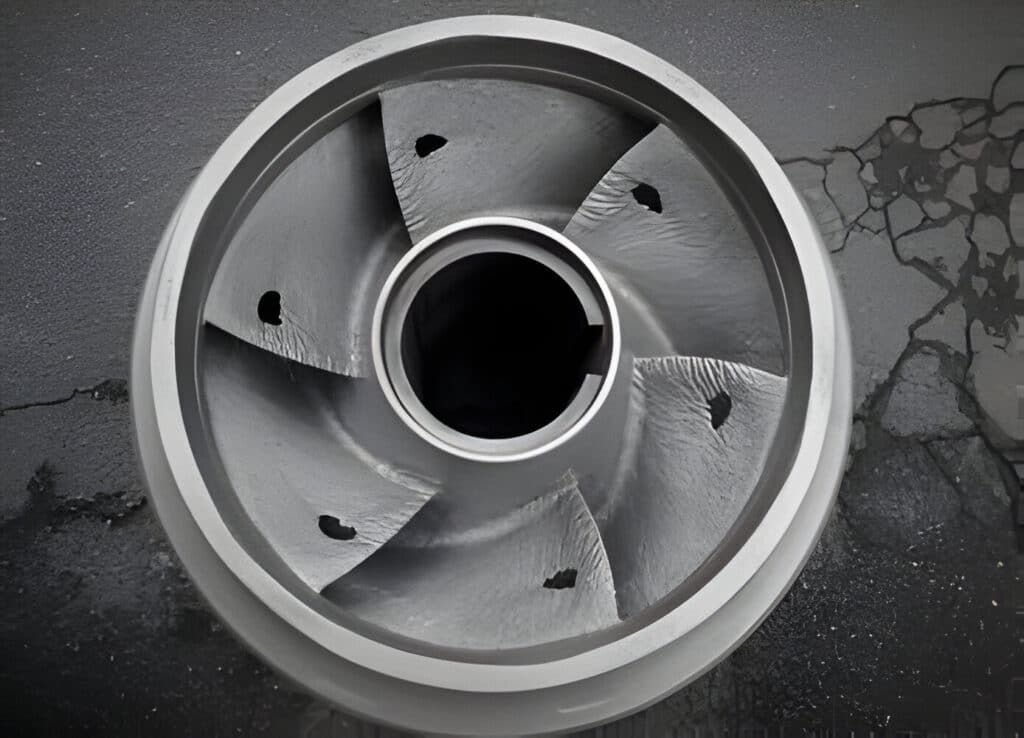
How to Prevent Pump Cavitation
Proper Pump Selection with Sufficient NPSHA Margin
- Ensure the pump has adequate Net Positive Suction Head Available (NPSHA) margin above the required NPSH.
- Consult pump manufacturers’ performance curves and guidelines to choose a pump that operates efficiently within its intended application range.
- Consider factors such as flow rate, head pressure, and fluid properties when making the selection.
Optimizing System Design
- Increase suction pipe diameter to reduce fluid velocity and pressure drops.
- Minimize fittings and valves in the suction line to decrease friction losses.
- Eliminate high points in piping that can trap vapor.
- Ensure adequate submergence of the suction source to prevent vortexing and air entrainment.
- Proper piping design with gradual transitions and smooth flow paths helps maintain laminar flow and uniform pressure distribution.
Operating Pumps Close to Their BEP
- Run centrifugal pumps near their Best Efficiency Point (BEP) and within the allowable operating range specified by the manufacturer.
- Avoid operating too far to the right on the pump curve, which can increase NPSH required.
- Use variable speed drives when appropriate to match pump output to system demands while maintaining optimal efficiency.
Maintaining Sufficient Suction Pressure and Low Liquid Temperature
- Keep suction pressure above the fluid’s vapor pressure with an adequate safety margin.
- Consider using booster pumps or elevating the suction source if needed.
- Control liquid temperature, as higher temperatures increase vapor pressure and cavitation risk.
- Ensure proper submergence and maintain consistent liquid levels in suction vessels.
Controlling Entrained Air and Proper Venting
- Install air release valves at high points in the system to remove trapped air.
- Properly design and maintain venting systems to prevent air accumulation.
- Use strainers or filters to remove debris that could cause local pressure drops.
- Ensure tight seals and connections to prevent air ingress, particularly on the suction side of the pump.
Regular Monitoring and Maintenance
- Implement a routine inspection and maintenance program for pumps and suction side components.
- Monitor for signs of cavitation such as noise, vibration, or erratic power consumption.
- Regularly check and clean filters, strainers, and valves.
- Perform periodic flow and pressure tests to verify pump performance.
FAQs
When a pump is cavitating what sound does it make?
A cavitating pump produces a loud, distinctive noise. It often sounds like gravel or marbles circulating through the system. The noise is described as growling, rumbling, or gravelly. This sound is caused by the rapid formation and collapse of vapor bubbles.
What is pump cavitation due to low flow?
Low flow cavitation occurs when insufficient liquid enters the pump. It’s caused by low pressure or high vacuum conditions at the pump inlet. This “starves” the pump, leading to bubble formation near the impeller eye. These bubbles implode, damaging the impeller over time.
In Conclusion
Pump cavitation is a serious issue that can damage equipment and reduce efficiency. Understanding its causes, recognizing symptoms, and implementing preventive measures are crucial for maintaining pump performance.
Regular maintenance, proper pump selection, and system design optimization are key to avoiding cavitation. For expert assistance, consult a pump specialist to ensure optimal system performance.

